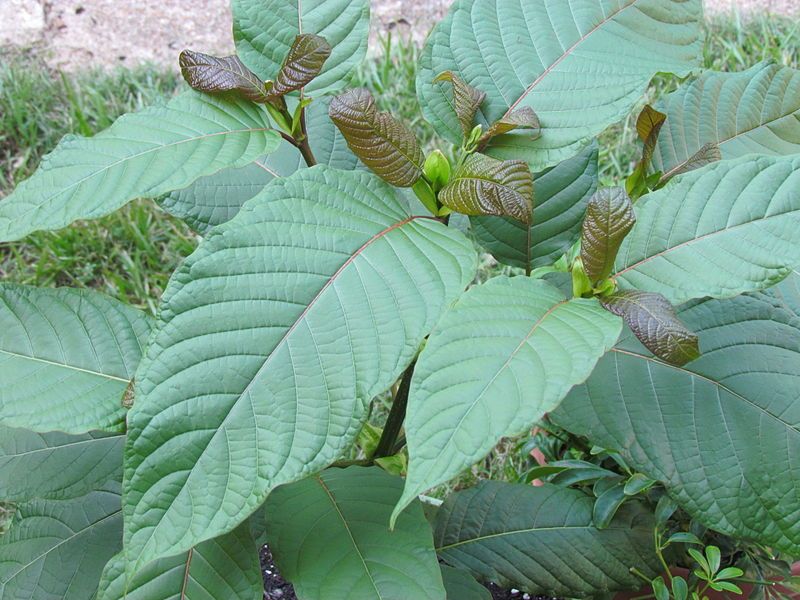Is Kratom a Public Health Threat or a Promising Herb in Need of More Research?
Industry leaders offer mixed responses to the DEA’s proposal to reschedule kratom into schedule 1 of the Controlled Substances Act.
Photograph by ThorPorre/Wikimedia Commons/CC-BY-SA-3.0.

The process to determine the future of kratom (Mitragyna speciosa), an herb native to Southeast Asia that’s generated regulatory controversy over the past few months, entered a new phase last week. On December 1, the comment period closed for the public to respond to the Drug Enforcement Agency’s (DEA) proposal to classify two constituents of the kratom plant into schedule 1 of the Controlled Substances Act (CSA). And while some leaders of the natural products industry supported the DEA’s proposed action against the plant, others urged the agency to reconsider.
Kratom’s Rocky Past
Kratom has made numerous headlines over the past few months, beginning with the DEA’s announcement on August 31 that it intended to classify two psychoactive constituents of kratom (mitragynine and 7-hydroxymitragynine) into schedule 1. But it’s not the first regulatory speed bump for the plant. In 2014, FDA banned import of the herb into the United States, and the agency has written that there “does not appear to be a history of use or other evidence of safety establishing that kratom will reasonably be expected to be safe as a dietary ingredient.” In particular, FDA expressed concerns that kratom consumption can lead to negative health outcomes, including respiratory depression, hallucinations, nausea, and more.
The DEA pointed to many of the same health risks in its August announcement, calling the plant an “imminent hazard to public safety.” Much of kratom’s popularity stems from its opioid-like effects that some experts say help prescription opioid users wean themselves off their addictions. But as a result of those effects, the DEA says, kratom “has a high potential for abuse.” The agency proposed it would place its two main psychoactive constituents into schedule 1 under the CSA’s temporary scheduling provisions, which would effectively place the whole kratom plant on the same list of banned substances as heroin and LSD.
That move was ultimately delayed following a stream of letters from industry stakeholders and congressional leaders urging the DEA to follow a regular review process allowing for the public to comment. The DEA then announced it would no longer pursue its emergency listing, but would instead open a public comment period ending on December 1.
Industry Response
With the comment period now closed, it’s evident that leaders within the natural products industry are taking very different approaches to the DEA’s proposed action against kratom. To start with those in agreement with the DEA, Dan Fabricant, CEO and executive director of the Natural Products Industry (NPA; Washington, DC), called out kratom as a “threat to public health.”
“Adding an untested and unregulated substance such as kratom to our food supply without the application of longstanding federal rules and guidelines would not only be illegal, it could likely be dangerous, leading to serious unintended consequences as our nation struggles with the crisis of opioid addiction,” Fabricant said in NPA’s formal comments submitted to the DEA. He added that kratom has never been submitted as a New Dietary Ingredient (NDI) notification to FDA, and that NPA welcomes DEA’s proposal to classify kratom into schedule I as a “necessary and welcome first step.”
But other industry associations, including the American Herbal Products Association (AHPA; Silver Spring, MD) and the American Botanical Council (ABC; Austin, TX), urged the DEA to reconsider its position. For instance, Michael McGuffin, president of AHPA, cautioned that it would be an “abuse of discretion” for the DEA to use its scheduling authority to remove an herbal plant from the existing marketplace just because one or more of its naturally occurring constituents have become subject to scheduling under the “broad standards” of the CSA. Such a move would also have a detrimental effect on research into kratom’s benefits, McGuffin said.
“AHPA believes restrictions on research are contrary to the interests of science and ultimately detrimental to the public interest,” McGuffin said. “AHPA members want to ensure that any process that proposes to classify a naturally occurring constituent of a plant as an illicit substance includes a thorough evaluation of available scientific data and full consideration of potential risks and benefits of consuming the substance.”
Meanwhile, ABC also called on the DEA to not proceed with its “restrictive scheduling” of kratom, and pointed to a recently published article in itsHerbalGram exploring the various issues related to the use of kratom. ABC’s comments to the DEA also called attention to the body of evidence supporting kratom’s possible benefits, including its potential to alleviate opioid-withdrawal symptoms. And while further research is necessary to understand both kratom’s potential benefits and safety issues, classifying the plant into schedule 1 would only make such research efforts more difficult, ABC explained.
“ABC realizes that there are compelling scientific data to support kratom’s potential therapeutic use; there is also confusion about its safety profile,” said Mark Blumenthal, founder and executive director of ABC, in a press announcement. “Our comments to DEA are intended to help ensure that appropriate scientific and medical research on this interesting plant and its biologically active constituents can continue with minimal regulatory hurdles.”
ABC also noted that it supports existing FDA enforcement actions against kratom products on the market that are not in compliance with FDA regulations.
Read more:
Next-Generation DNA Testing for Botanicals
What Has FDA Done to Stop Industry Lawbreakers in the Last Year?
Industry Leaders Slam FDA’s Take on Vinpocetine
Michael Crane
Associate Editor
Nutritional Outlook Magazine
michael.crane@ubm.com
HHS announces restructuring plans to consolidate divisions and downsize workforce
Published: March 27th 2025 | Updated: March 27th 2025According to the announcement, the restructuring will save taxpayers $1.8 billion per year by reducing the workforce by 10,000 full-time employees and consolidating the department’s 28 divisions into 15 new divisions.







